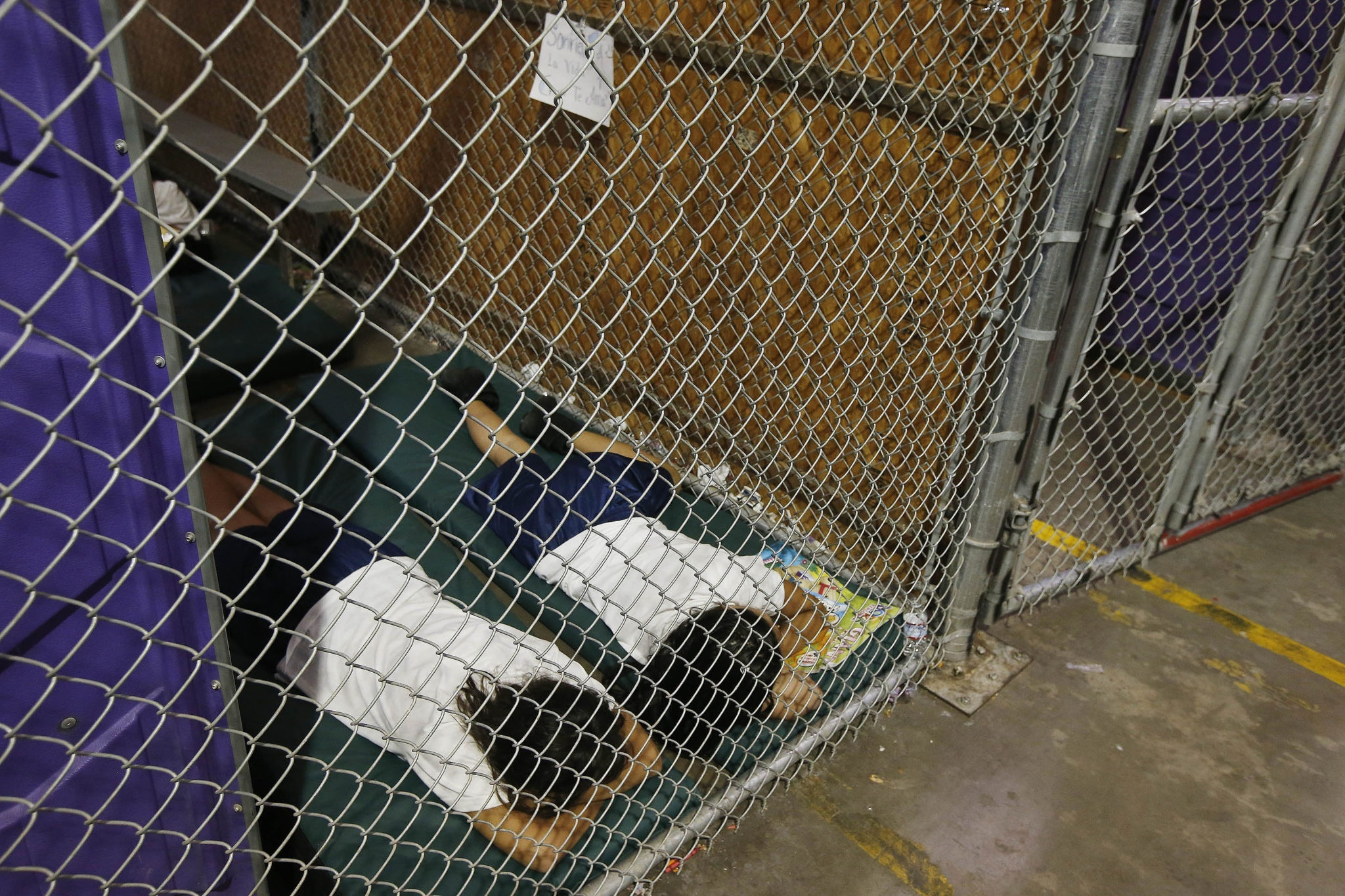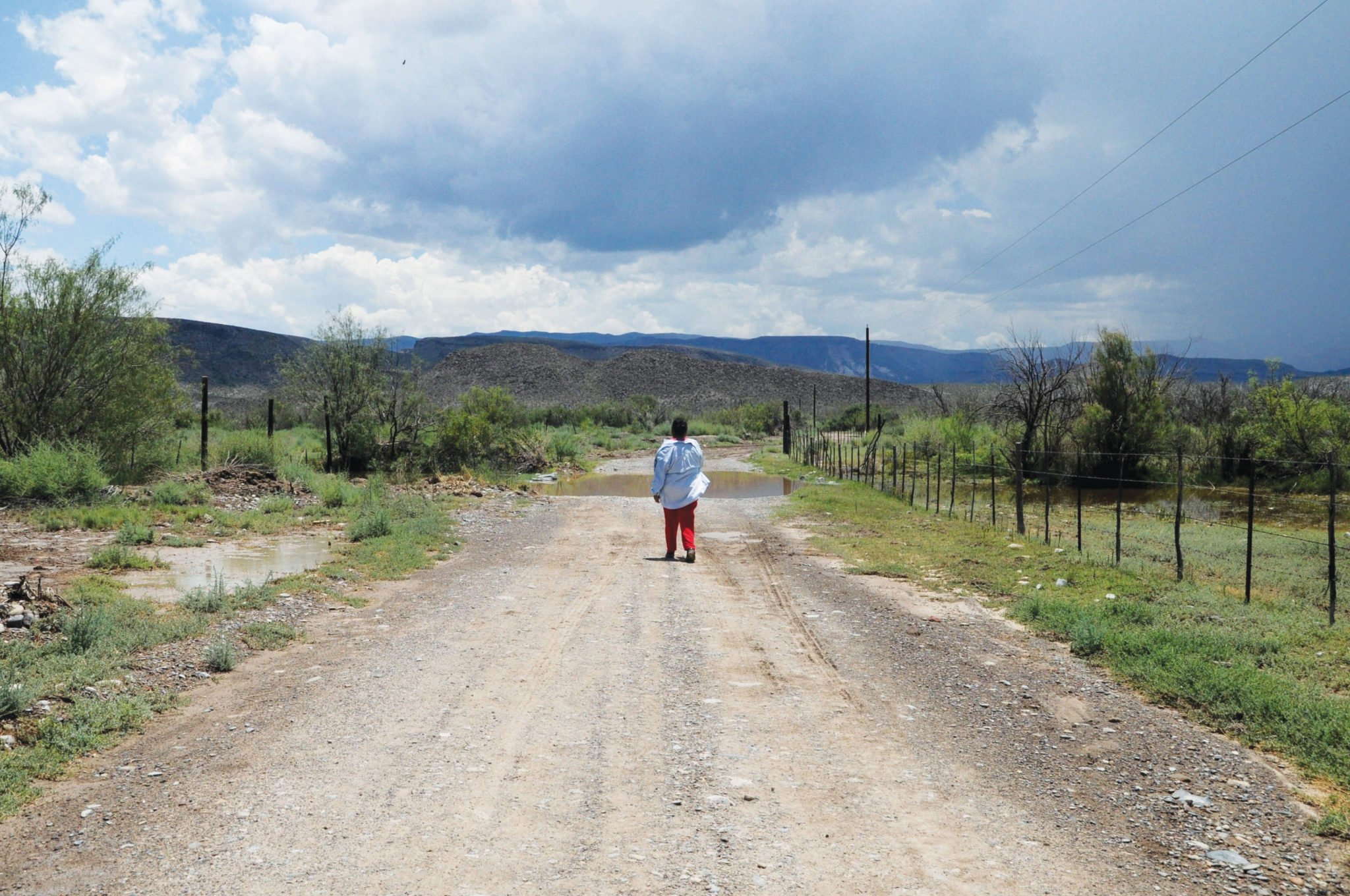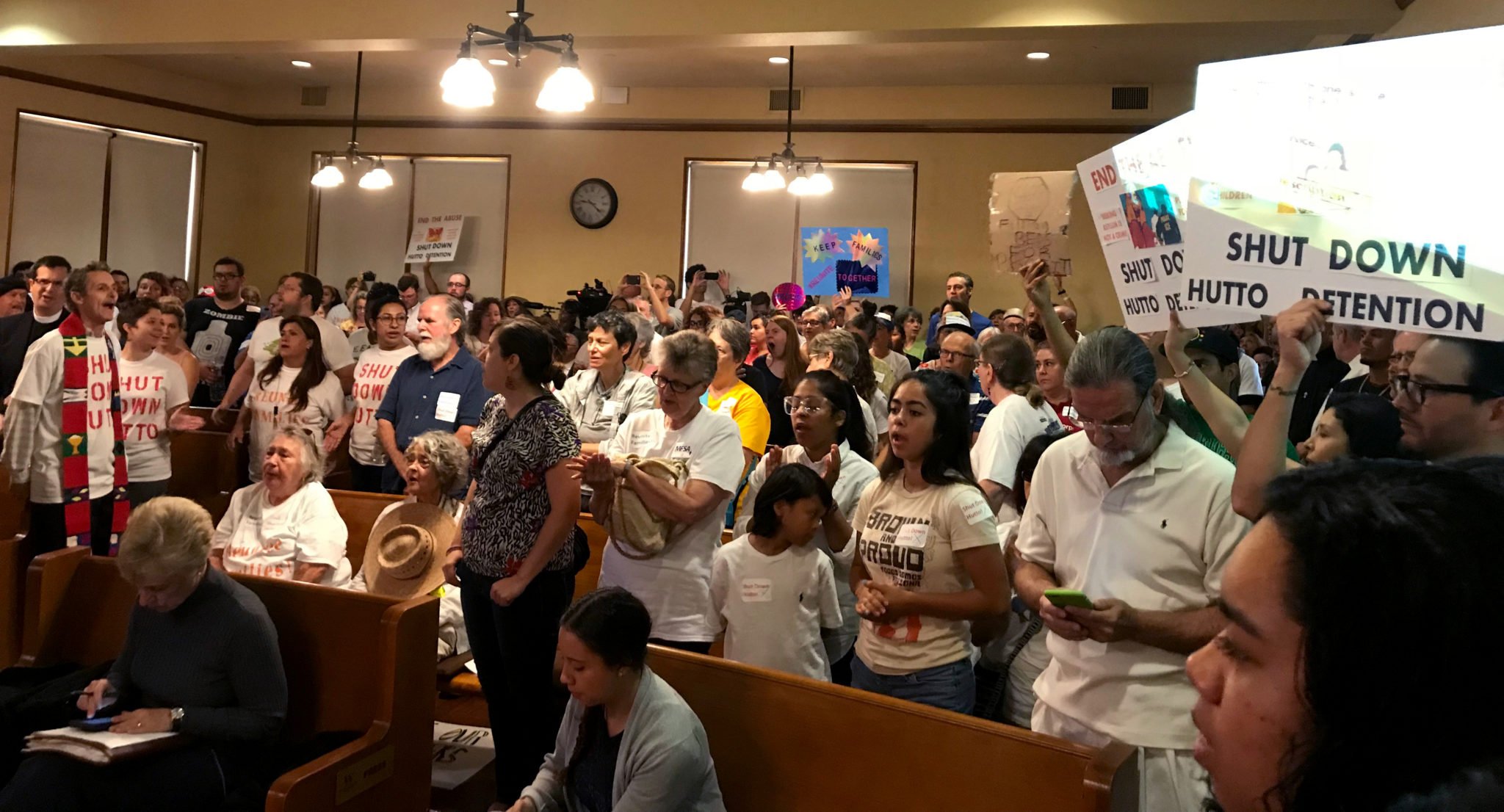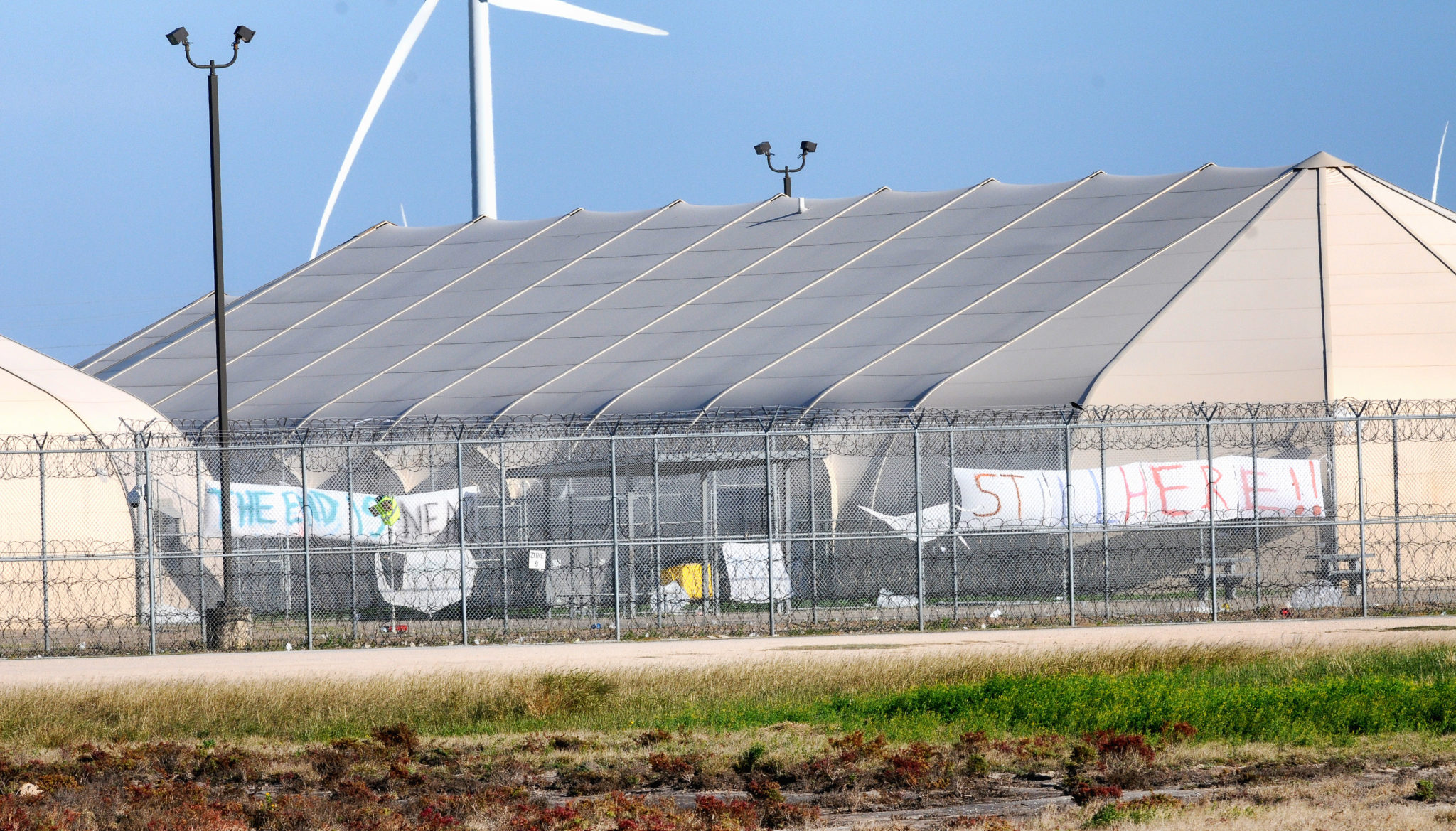
New 1,000-Bed ICE Lockup Set to Open on Site of Notorious ‘Tent City’ in South Texas
Willacy County officials, ICE and a private prison company are set to ink a new deal within days that would resurrect one of the nation’s most troubled immigrant detention centers.

Above: Signs attached to the inside of the prison yard near the tents read: "THE END IS NEAR" and "STILL HERE!!" at the Willacy County Correctional Center in Raymondville in 2015.
New 1,000-Bed ICE Lockup Set to Open on Site of Notorious ‘Tent City’ in South Texas
Willacy County officials, ICE and a private prison company are set to ink a new deal within days that would resurrect one of the nation’s most troubled immigrant detention centers.
–
They called it “Tent City,” or “Ritmo” — the Gitmo of Raymondville, a desolate South Texas town of some 11,000 souls. Its proper name: the Willacy County Correctional Center, a carceral complex made up of a 1,000-bed concrete building and an array of 10 Kevlar-covered domes, which immigrant inmates slashed open and burned during a 2015 prison riot. The place is vacant now — but maybe not for long, as the Observer found this week that Willacy County, Immigration and Customs Enforcement (ICE) and a private prison company are ironing out a new deal that could be signed within days.
The deal in the works is to reopen the 1,000-bed concrete structure and use it to hold non-criminal immigrant detainees for ICE, according to Raymondville Mayor Gilbert Gonzalez and other sources. There won’t be any Kevlar tents this time around — a good thing, Gonzalez said — but the facility will be run by the same company that managed it from 2006 to 2015: Utah-based Management and Training Corporation (MTC), the country’s third-largest private prison operator.
“We are in the final stages [of the deal],” said Issa Arnita, a spokesperson for MTC, adding that the facility will only hold adults, not children or families. “The tent-like structures have all been taken down. A hard structure at the facility … is in the process of being repurposed as a detention center,” Arnita added, though he wouldn’t provide further details.
On Monday, the Willacy County Commissioners Court held a special meeting in which approving the new detention contract was the sole action item, but no vote occurred. The next scheduled meeting is Thursday, but the county clerk could not confirm whether a vote on the contract will take place that day.
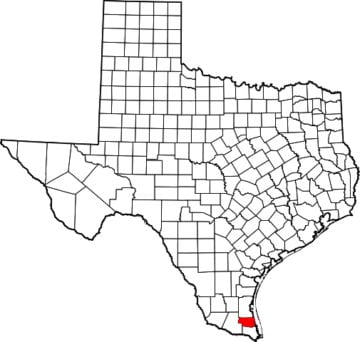
An ICE spokesperson declined to comment on the Willacy deal, as did Willacy County Judge Aurelio Guerra, who did not return repeated phone calls.
Immigrant advocates say they’re outraged by the prospect of Ritmo 2.0. “Given the serious failures of the past, it is unbelievable that anyone would think it’s a good idea to reopen the detention camp at Willacy,” said Victoria López, senior staff attorney at the ACLU. “This is just another example of the Trump administration targeting immigrants and expanding the failed immigration detention system.”
The move to reopen Willacy comes as part of a major push to expand the nation’s immigrant lockups. About 41,500 immigrants are currently detained nationwide, a near-record high, according to an ICE spokesperson. Last week, ICE also requested proposals for 15,000 new family detention beds — a move to accommodate Trump’s decision to incarcerate families rather than separate them. Private prison stocks have since soared.
In a way, it’s surprising to see Willacy County and MTC eager to collaborate on incarcerating immigrants again. Just last year, the county was suing MTC for mismanaging the same correctional facility. According to the lawsuit, filed in late 2016 and later dropped, Willacy County went deep into debt in 2006 to finance the correctional center. For five years, ICE held civil detainees there and everything was going according to plan — until MTC allegedly started screwing up the gig.
In 2011, amid reports of squalid conditions, ICE yanked its detainees out of Willacy. The federal Bureau of Prisons (BOP) then came to the rescue, filling it with immigrants serving criminal sentences to be followed by deportation, until the riot in February 2015.
“Given the serious failures of the past, it is unbelievable that anyone would think it’s a good idea to reopen the detention camp at Willacy.”
Shortly before the riot, the ACLU chronicled conditions at the facility: “Insects and spiders … crawl in through holes in the Kevlar and bite them,” the report read. “The toilets are constantly overflowing, leaving a terrible smell in the tents.”
As the Observer described the 2015 affair: “Prisoners wielding pipes, sharpened broomsticks and kitchen knives seized control of the privately run federal prison for nearly two days. … They set fire to three of the 10 Kevlar tents. … Somehow, the inmates managed to slice open the tents that hadn’t been torched.”
Even BOP couldn’t countenance such a fracas, and it dropped the facility soon after. That left the county with an empty prison and more than $60 million in debt.
Arnita, the MTC spokesperson, lashed back at his company’s critics in an email to the Observer. “We’ve always strongly disputed the allegations in the ACLU report,” he said, adding that inmates always had access to quality care and recreation. The riot, Arnita explained, occurred because the facility wasn’t fully prepared for the “higher-risk” BOP population.
“Cynics can say those in business to provide services in healthcare, education, urban renewal, disaster relief, or for a host of other social problems are profiting from human troubles,” Arnita wrote. “But they are also making it possible for the government to accomplish dramatically more than they could without the assistance of the private sector.”
In March 2017, Willacy County dropped its lawsuit against MTC after the company agreed to both buy the correctional facility and pay off the county’s debt. MTC also agreed to pay the county $3 per inmate per day if the facility were ever to open again, according to the Valley Morning Star.
“Insects and spiders … crawl in through holes in the Kevlar and bite them. The toilets are constantly overflowing, leaving a terrible smell in the tents.”
MTC’s purchase of the facility last year was part of a “private prison rush,” according to Bob Libal, director of Grassroots Leadership, an Austin nonprofit that fights private prisons. “[Companies] bought empty or under-capacity facilities in an effort to cash in on the Trump gold rush,” Libal said. “Now, we’re starting to see that horrible reality play out.”
To enact that reality, Willacy County is set to vote on what’s called an Intergovernmental Service Agreement, a contractual arrangement whereby ICE will pay the county, and the county will pay the prison operator, MTC. Such arrangements are expeditious for the feds and lucrative for counties, which haul in administrative fees.
And local officials are hungry for the revenue. Willacy County, population 22,000, is desperately poor: 38 percent of its overwhelmingly Hispanic residents fall below the federal poverty line. When the correctional center shut down in 2015, 400 employees were laid off, and the county lost a whopping third of its budget. Now, many local residents long for even low-paying prison guard work.

“These will be some of the best-paid jobs in our area,” said Gonzalez, the Raymondville mayor, who’s excited to see the facility reopen and added that the city will get property taxes and utility payments to boot. (Arnita said he can’t confirm the number of jobs the facility will generate until a contract is finalized.)
Gonzalez added that he isn’t worried about another scandal, despite the same company running the facility. When the riot occurred, he noted, it was well-contained by MTC and law enforcement, and city residents were kept safe.
Asked about Trump’s immigration policies, Gonzalez said he strongly opposes family separations — but he’s not against an ordinary immigrant lockup. “People were getting put in facilities like this one under Bush and Obama, too,” he said. “It’s not really my place to take sides on that.”
Top photo: Signs attached to the inside of the prison yard near the tents read: “THE END IS NEAR” and “STILL HERE!!” at the Willacy County Correctional Center in Raymondville in 2015. AP Photo/Valley Morning Star/David Pike.
